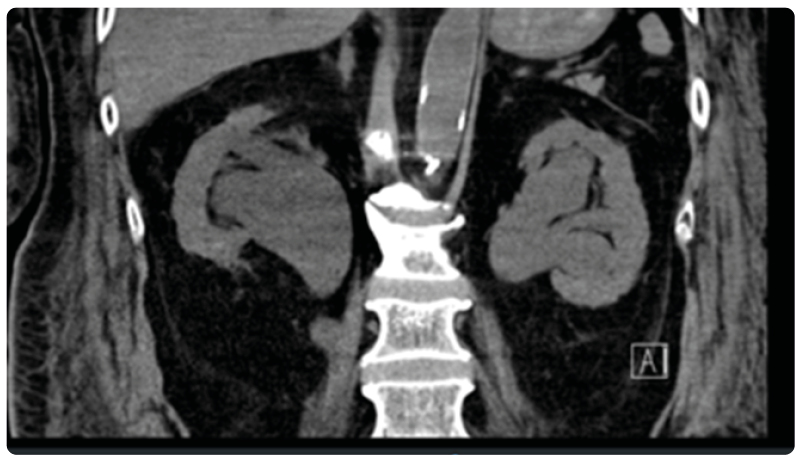BACKGROUND
Genitourinary tuberculosis (GUTB) results from hematogenous spread of chronic latent pulmonary tuberculosis of 5–40 years.1 The diagnosis is typically delayed, as it can mimic a urinary tract infection.1,2 Only 5–45% of cases of tuberculosis have extrapulmonary manifestation, and of these, only 30–40% involve the urogenital tract.1
CASE PRESENTATION
This is a case of a male in his 60s who was immunocompromised due to rheumatoid arthritis, requiring methotrexate and chronic prednisone. He was diagnosed with GUTB requiring orchiectomy secondary to recurrent epididymo-orchitis. The pathology following his epididymo-orchitis showed necrotizing granulomatous infection with negative cultures. However, urine culture was significant for pyuria and acid-fast bacilli. Cystoscopy was notable for bilateral hydronephrosis associated with significant bladder inflammation and ureteral strictures. He was treated with levofloxacin 750 mg daily for 6 months, rifampin 600 mg daily for 6 months, pyrazinamide 1,500 mg daily for 2 months, ethambutol 1,200 mg daily for 2 months, and pyridoxine 50 mg daily for 6 months as it was resistant to isoniazid (Figure 1).

Figure 1: CT of abdomen shows severe hydronephrosis in the right ureter.
CONCLUSION
Prompt diagnosis of GUTB can prevent the need for invasive procedures and improve the quality of life of patients that have GUTB. Improved awareness of the diagnosis can improve diagnosis time. Patients who require prolonged immunosuppression should be screened not only for tuberculosis, but also monitored and/or receive prophylactic therapy against opportunistic infections.






